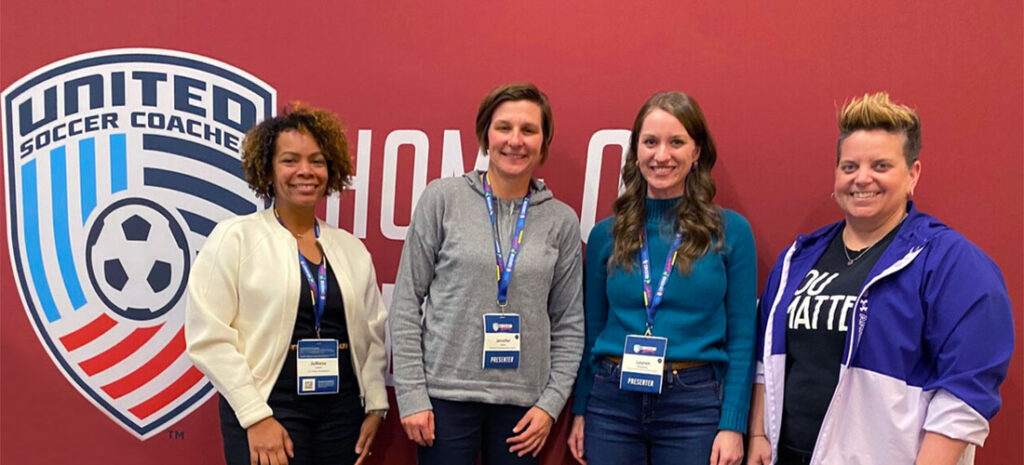Elevating Safety on and off the Pitch

By Ju’Riese Colon, Chief Executive Officer, U.S. Center for SafeSport
There’s quote I often reflect on by that affable soccer coach we all know and love, Ted Lasso: “There’s two buttons I never like to hit – that’s panic and snooze.”
As CEO of the U.S. Center for SafeSport this sentiment resonates with me. We put rules in place, audit against them, and hold individuals and organizations accountable to help prevent panic-scenarios, and we never sleep on our duty to educate the sport community about how to prevent abuse before it occurs.
My team and I recently had the chance to meet with individuals who play soccer coaches in real life.
For the second year in a row, the SafeSport team traveled to the annual United Soccer Coaches Convention to share information about creating safe and inclusive sport environments with coaches and athletes from all over the world. Thousands of participants attended the January event in sunny Anaheim, CA, and we got to meet with many of them who passed by the SafeSport booth on the convention floor. We also had the opportunity to meet with the National Women’s Soccer League (NWSL), U.S. Youth Soccer, and several other leaders in soccer focused on elevating safety on and off the pitch.
Our staff led workshops on accountability and culture change at the conference and also presented at the inaugural NWSL Safeguarding Summit, which took place on-site. The Summit brought together NWSL player safety officers and safeguarding professionals from across the sport landscape.
I had opportunity to join a panel discussion focused on fostering positive team culture and discussed some of the Center’s recommendations for how coaches can help create safe spaces for athletes to thrive:
- Reinforce to athletes that while winning matters, their growth and well-being are more important.
- Keep lines of communication open with athletes and their parents/guardians. Ask proactively for feedback on your communication and coaching style and offer multiple ways for athletes to share concerns.
- Be consistent in communicating and holding people accountable to core values, expectations, and policies.
- Respond to misconduct immediately with care and consistency.
- Communicate with athletes about the importance of positive bystander intervention, and model it by saying or doing something when you see abusive behaviors

Ju’Riese Colón is the Chief Executive Officer of the U.S. Center for SafeSport, where since July 2019 she has led the organization’s strategic vision and direction. An experienced child advocate who serves as an expert on issues related to child safety, Ju’Riese has led prevention and outreach initiatives with youth-serving organizations serving families, educators, law enforcement, and diverse communities.
